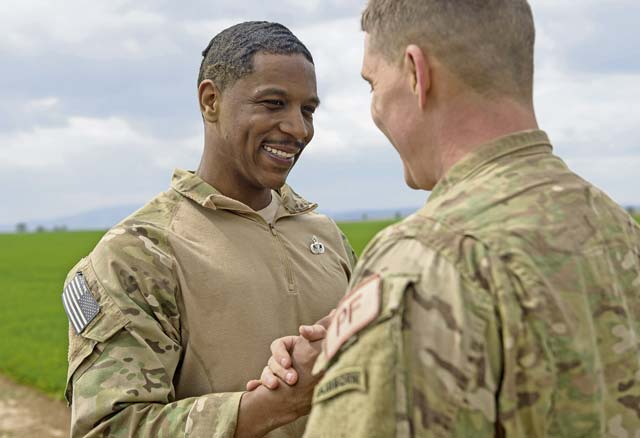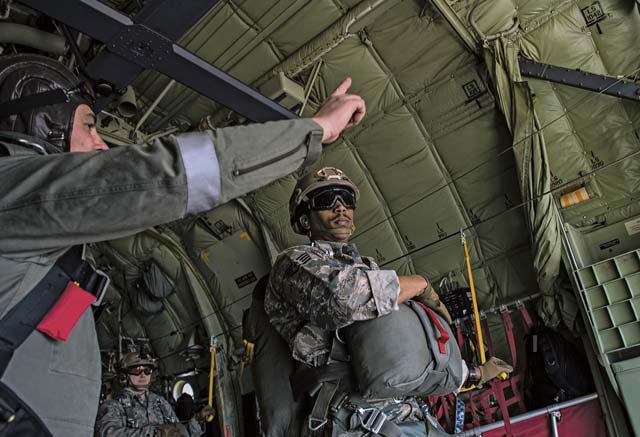
Staff Sgt. Robby Royster, 435th Security Forces Squadron NCO-in-charge of operations and close precision engagement team leader, descended onto the drop zone at Alzey, Germany, earning his master rated parachutist badge, April 12, 2017.
The 435th Contingency Response Group’s mission opportunities aligned with Royster’s hard work and dedication, allowing him the ability to earn the exclusive badge with less than nine years in service.
It is extraordinary for a paratrooper from any military branch to earn a master rated parachutist badge. In the U.S. Air Force, it is even rarer to come across a jump master, especially one with this elite recognition.
“SSgt Royster graduated the U.S. Army Jump Master School his first time attending, which is a feat not many can say they have achieved,” Master Sgt. Jarrod Getz, 435 SFS operations NCO-in-charge said. “This badge represents the highest echelon of tactical leadership within the Airborne community and to see one of our own realize this rite-of-passage makes myself, and all of his Brethren here in 435 CRG beyond proud.”
Getz said the badge is known as the ‘Master Blaster.’ It requires a minimum 36 months on active jump status, 65 exits out of an aircraft, 25 combat equipment jumps, four night jumps and two night duties.
In order to achieve the elite paratrooper status, service members must first graduate Jump Master School. After fulfilling more than 150 requirements for Jump Master School, Royster went further to earn his Senior Rated Parachutist Badge.
“It all comes down to the jump master,” Royster said. “Being able to control the flow of the aircraft and safely send paratroopers out the door is the best part.”
“Safety,” Royster said, “is the most important.”
“Their lives are literally in your hands,” Royster said. “The whole operation needs to stay afloat and it makes me stay on my toes and stay sharp as the jump master.”
Furthermore, jumpmasters are trained to rig individual equipment containers and door bundles, inspect each paratrooper prior to boarding the aircraft and safely execute day and night combat equipment jumps.
“Upon Ssgt. Royster returning back from Jump Master School, he was immediately looked to as a subject matter expert,” Getz said. “To fill that role as a young Staff Sergeant speaks volumes on the confidence his leaders have in his abilities. For us here at the 435 SFS, this is a huge accomplishment. Needless to say, this is an exceptional honor for our unit and Ssgt. Royster…AIRBORNE ALL THE WAY!”
According to Getz, only approximately two percent of security forces personnel are qualified paratroopers.
Royster is one of five jumpmasters in the 435 CRG and has directed numerous multi-national airborne operations on both the European and African continents.
The eight-year Airmen works directly with NATO and partner allies during these operations, assisting in strengthening relations and maintaining combined readiness.
As Royster continues to build relations descending into partner nations, the master rated parachutist persists to strengthen his craft, day and night, by prepping hundreds of paratroopers for safe, successful landings, every time.








